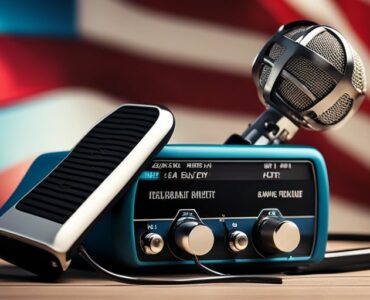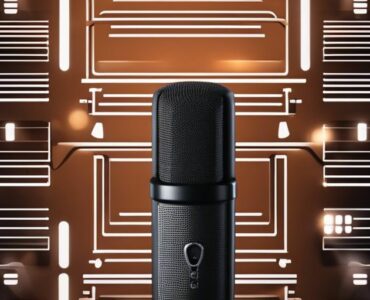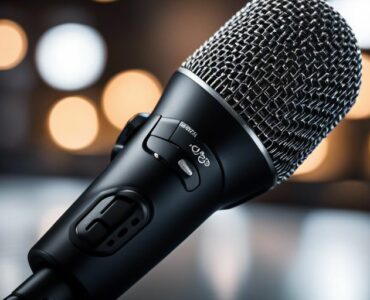Experiencing microphone feedback issues can be frustrating and distracting, especially during important presentations or performances. However, it’s important to remain calm and address the problem with a systematic approach. First, check for any loose connections or faulty cables that may be causing the feedback. Next, adjust the positioning of the microphone and speakers to minimize the chances of feedback occurring. Consider using a feedback suppressor or equalizer to help eliminate any unwanted noise. If the issue persists, consider consulting with a professional technician to diagnose and resolve the problem. By following these steps, you can effectively troubleshoot and address microphone feedback issues, ensuring a smooth and successful audio performance.
Table of Contents
Key Takeaways:
- Check microphone placement: Ensure the microphone is not too close to speakers or monitors to prevent feedback.
- Adjust microphone gain: Lower the microphone’s gain or sensitivity to reduce the likelihood of feedback.
- Use a feedback suppressor: Invest in a feedback suppressor to automatically detect and filter out feedback frequencies.
- Isolate the source of feedback: Identify and eliminate any potential sources of feedback, such as open mics or audio loops.
- Consider room acoustics: Address any room acoustics issues, such as excessive reverberation, that may contribute to feedback problems.
Understanding Feedback
Some 3 Secrets to Eliminating Microphone Feedback are to understand the concept of feedback in the first place. Feedback occurs when the sound from the speakers is picked up by the microphone and then re-amplified, creating a loop. This loop can result in a loud, high-pitched noise that can be disruptive to your audio performance.
Causes of Microphone Feedback
One of the main causes of microphone feedback is the proximity of the microphone to the speakers. When the microphone is too close to the speakers, it can pick up the sound and create a loop of feedback. Other causes can include improper sound system setup, microphone sensitivity, and room acoustics.
Types of Feedback Sounds
Microphone feedback can present itself in different ways, including high-pitched squeal, low-frequency rumble, and ringing or howling sounds. The sound can vary depending on the specific frequencies that are being amplified in the feedback loop. The high-pitched squeal is the most common and can be the most disruptive to your performance. The low-frequency rumble can also be a nuisance, especially in recording situations. The ringing or howling sound can be particularly dangerous, as it can cause damage to your ears if exposed for prolonged periods. It’s important to address feedback issues promptly to prevent any potential harm.
| Feedback Sound | Description |
| High-pitched squeal | Most common and disruptive feedback sound |
| Low-frequency rumble | Can be a nuisance, especially in recording situations |
| Ringing or howling | Potentially dangerous and can cause damage to ears |
The information should be broken down into paragraphs with subheadings.
Initial Steps for Troubleshooting
Obviously, dealing with microphone feedback issues can be frustrating and disruptive, but there are several steps you can take to troubleshoot and resolve the problem. Here are some initial steps you should take to diagnose and address the issue.
Quick Checks
When troubleshooting microphone feedback, start with some quick checks to ensure everything is set up properly. Check the connections between the microphone, the audio interface, and the speakers. Make sure the microphone is plugged in securely and that the audio levels are set correctly. Also, check for any physical damage to the microphone or cables that could be causing the issue. These quick checks can often identify simple problems that can be easily fixed.
Environmental Adjustments
If the quick checks don’t reveal any issues, consider making some environmental adjustments. Move your microphone away from any speakers or monitors to prevent sound from being picked up and creating a feedback loop. Additionally, check the room for any reflective surfaces such as windows or hard walls that could be causing the feedback. Making these environmental adjustments can help reduce the likelihood of microphone feedback occurring.
Advanced Troubleshooting Techniques
Despite your best efforts, some microphone feedback issues may be more complex and require advanced troubleshooting techniques. Here are some additional steps you can take to address these issues:
- Equipment Inspection: This involves a thorough inspection of your microphone, cables, and other audio equipment to identify any physical damage or faults that could be causing feedback.
- Sound System Configuration: This step involves reviewing and adjusting your sound system’s settings and configurations to optimize performance and eliminate feedback issues.
Equipment Inspection
When troubleshooting feedback issues, it’s important to carefully inspect all your equipment for any signs of damage or malfunction. Check the microphone, cables, connectors, and other audio devices for loose connections, frayed wires, or physical damage. Remember to also inspect the power sources and any additional equipment in your setup. Identifying and addressing any issues with the physical components of your audio system is crucial in resolving feedback problems.
Sound System Configuration
Reviewing and adjusting your sound system’s settings and configurations can significantly impact the occurrence of microphone feedback. You’ll want to ensure that your input and output levels are properly balanced, your equalization settings are appropriate for the environment, and your gain structure is set up correctly. Make sure to also check for any potential sources of interference or signal degradation within your setup. Configuring your sound system properly is critical in minimizing feedback and optimizing your audio quality.
Preventive Measures and Best Practices
For preventing microphone feedback issues, it is essential to follow some best practices and take preventive measures in your audio setup. By implementing the following strategies, you can minimize the potential for feedback and ensure a smooth and uninterrupted audio experience.
Proper Microphone Usage
When using microphones, it is crucial to position them correctly and at an appropriate distance from the sound source. Ensure that the microphone is pointed away from any speakers or monitors to avoid audio feedback. Additionally, be mindful of your movements and refrain from tapping or bumping the microphone during use, as this can cause unwanted noise and interference.
Regular Maintenance and Equipment Care
Regular maintenance of your audio equipment is essential for preventing microphone feedback issues. Keep your microphones and associated hardware clean and free from dust and debris. Check and tighten any loose connections, and inspect cables for signs of wear and tear. Properly store and protect your equipment when not in use to prevent damage and malfunctions.
Conclusion
So, when troubleshooting microphone feedback issues, it is important to first check the placement and distance of the microphone from the speakers. Additionally, adjusting the gain and volume levels on both the microphone and the sound system can help eliminate feedback. Ensuring that all cables are securely connected and free from any damage is also crucial in preventing feedback. Lastly, consider using a feedback suppressor or equalizer to help eliminate any remaining issues. By following these steps, you can effectively troubleshoot and resolve microphone feedback problems, ensuring a smooth and professional audio experience.
FAQ
Q: What causes microphone feedback issues?
A: Microphone feedback is typically caused by a loop in the audio signal, where the microphone picks up the sound from the speakers and amplifies it, leading to a high-pitched squeal or screeching noise.
Q: How do I troubleshoot microphone feedback issues?
A: Start by lowering the volume on the microphone and speakers. Ensure that the microphone is not too close to the speakers, as this can cause feedback. Check for any loose connections or faulty cables that may be contributing to the issue. Additionally, using a feedback suppressor or graphic equalizer can help to eliminate feedback.
Q: What can I do to prevent microphone feedback issues in the future?
A: To prevent microphone feedback, make sure to position the microphone and speakers so that they are not facing each other. Use quality cables and connectors, and always keep them in good condition. Furthermore, investing in a good quality microphone and sound system can help to minimize the risk of feedback issues.











Add comment